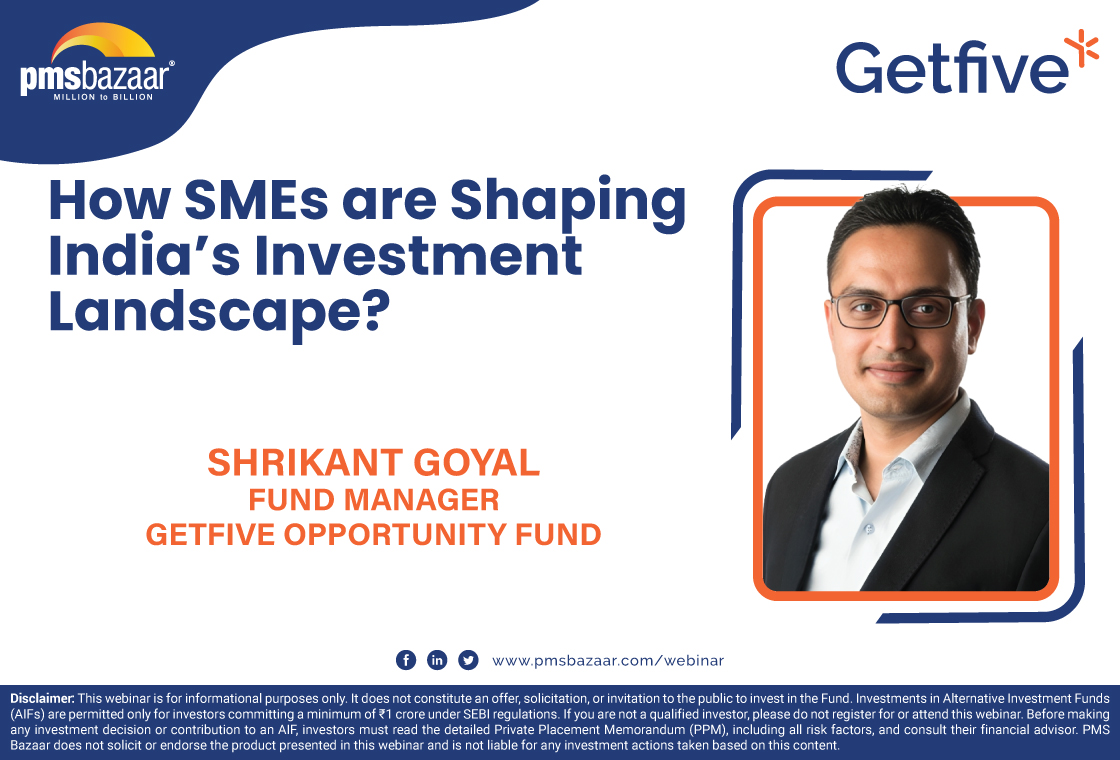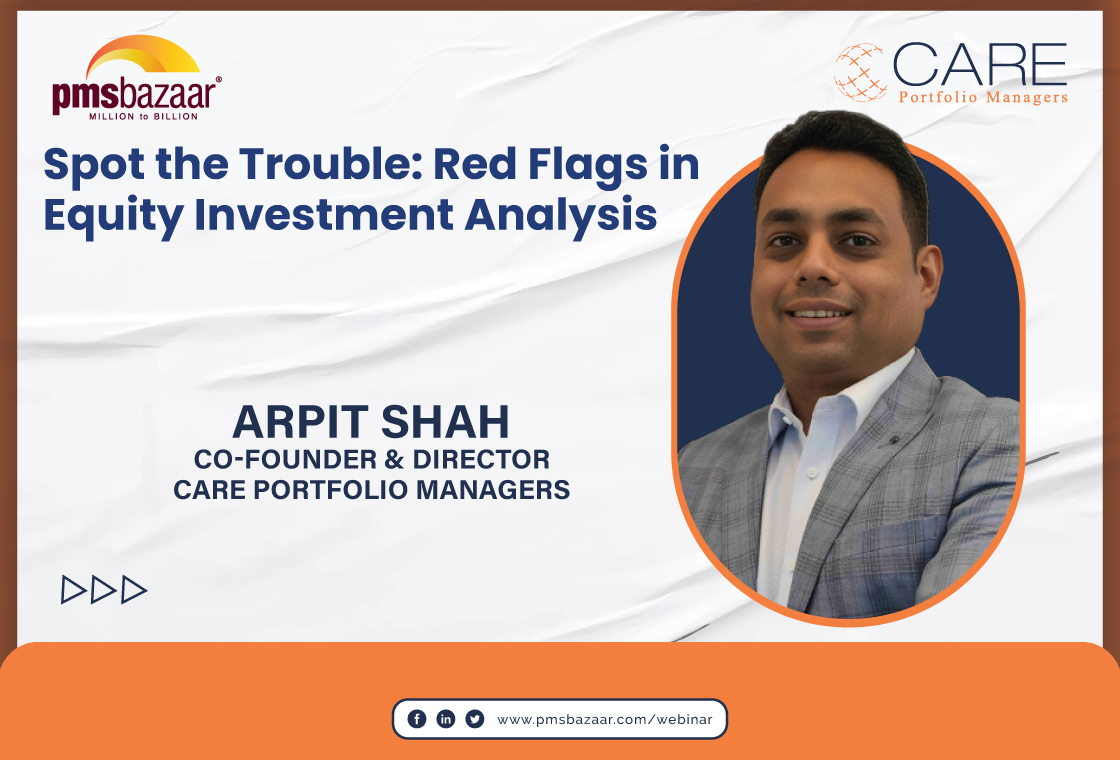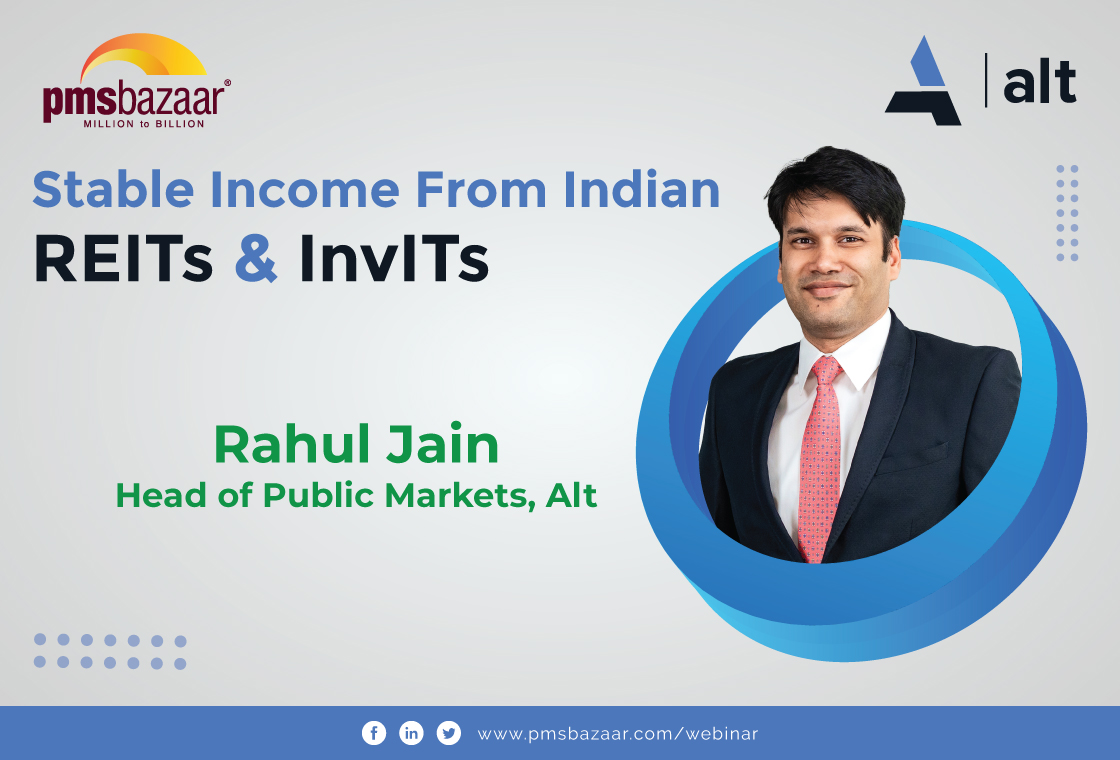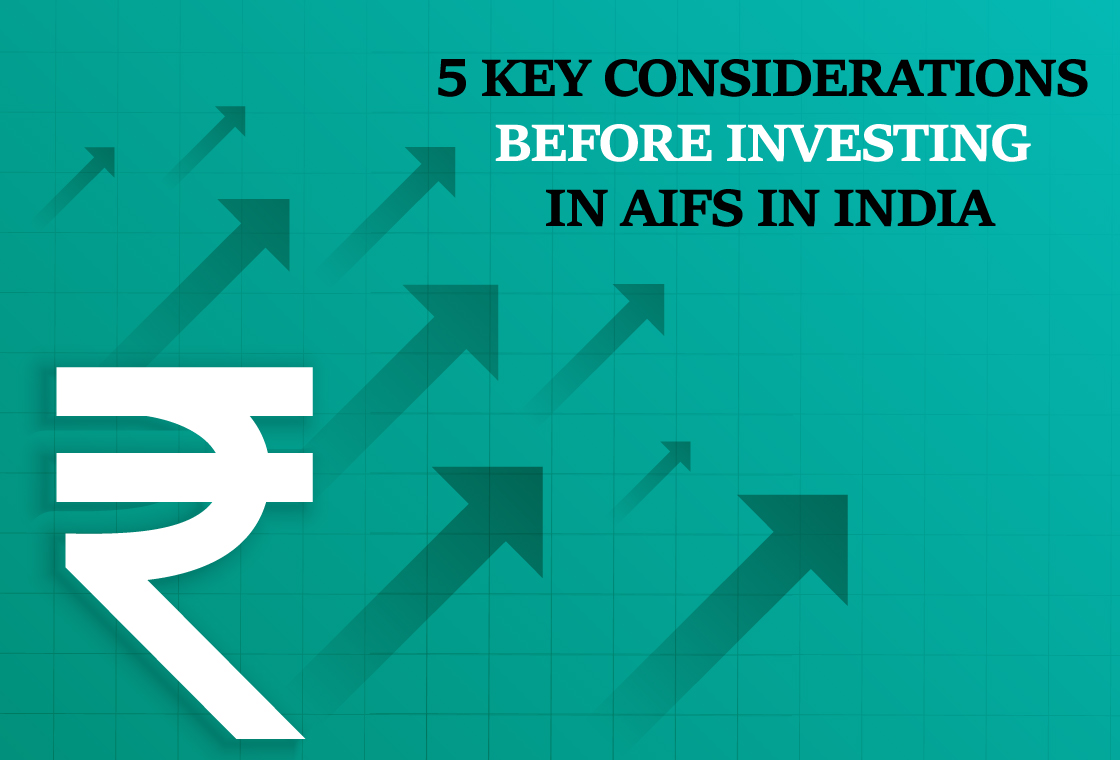PMS Bazaar recently organized a webinar titled “How SMEs are Shaping India’s Investment Landscape?” which featured Mr. Shrikant Goyal, Fund Manager, GetFive Opportunity Fund.

The webinar blog covers insights from Mr. Goyal, which includes GetFive Opportunity Fund, a ₹100 crore Category I Venture Capital Fund focused on high-growth SMEs. Established in 2025, it targets pre-IPO or SME-listed firms with a three-year holding period and exits via IPOs or PE sales. The fund bridges SME capital gaps through equity infusion, rigorous due diligence, and valuation discipline. With 27 QIB investments since April 2025, it’s achieving over 30–45% returns and aims for a 25% CAGR, focusing on resilient, growth-oriented sectors.
Key aspects covered in this webinar blog are
- Fund structure and strategy overview
- The changing face of the SME market
- Investment thesis: Bridging the capital gap
- The investment and exit process
- Performance and case studies
- Empowering SMEs and ensuring valuation discipline
- The advantage of early-stage SME investment
- Risk management and liquidity concerns
- Investor allocation and sector focus
Mr. Shrikant Goyal, started the presentation by outlining the structure and strategy of their Category I Venture Capital Fund, the GetFive Opportunity Fund. The fund is exclusively focused on the Small and Medium-sized Enterprises (SME) sector and aims to capitalize on the rapidly evolving SME market landscape.
Fund Structure and Strategy Overview
Mr. Goyal began by providing a fact sheet about the fund, noting that it is a Category I venture capital fund. He explained that it is a close-ended fund with a fundraise target of ₹100 crore, structured as ₹50 crore plus an additional ₹50 crore Green-shoe option.
The fund’s thesis centers on investing in companies that are pre-IPO bound or listed on the SME exchange. The target investment holding period is approximately three years, with an exit strategy focused on either an Initial Public Offering (IPO) or a strategic private equity sale. The fund's tenure is five years, with an option for a two-year extension. The GetFive Opportunity Fund was established in 2025 with the explicit aim of investing in SMEs deemed to be high-growth, scalable, and profitable.
The Changing Face of the SME Market
Mr. Goyal highlighted a significant shift in the SME domain, comparing the periods before and after 2022. He stated that between 2012 and 2022, approximately 800 to 1,000 companies listed on either the NSE or BSE SME platforms.
However, a substantial increase in listing activity has been witnessed post-2022. Mr. Goyal revealed that in the last three years (since 2023), over 600 companies have already listed. Furthermore, he projected that in 2025, the number of listings could exceed the highest number to date (247), potentially crossing 250. This surge is attributed to SMEs recognizing the potential for significant value creation for both themselves and their investors, facilitated by the collaboration of merchant bankers, investors, and the companies themselves.
Investment Thesis: Bridging the Capital Gap
The fund's investment thesis is sharply focused on SMEs that meet stringent criteria. Mr. Goyal noted that the selected SMEs must have been in business for a minimum of three to four years and be backed by consistent, year-on-year net profitability and good revenue generation.
He articulated the rationale behind this selective approach by pointing to a crucial capital gap in the SME sector. Historically, SMEs have grown primarily using self-generated funds or borrowed capital from banking channels, often missing out on primary equity infusion. This lack of capital has prevented them from making substantial investments in Research & Development (R&D) or large-scale market development. By injecting equity, the fund aims to enable these companies to invest in working capital, R&D, or market expansion, thereby unlocking significant growth potential.
The fund specifically targets strong, sector-leading companies that are currently undervalued because they have not yet pursued an equity fundraise. This strategy aims to secure investments at attractive valuations, leading to reasonable returns upon a two-to-three-year exit. The average deal size for the fund is up to ₹7 crore, often invested alongside other partners.
The Investment and Exit Process
Mr. Goyal detailed the rigorous process followed by the fund's integrated platform, which benefits from an experienced team skilled across various SME deals, including private equity, debt, and investment banking. The process begins with sector selection, based on an assessment of which sectors are poised for growth in the next three to five years.
This is followed by a thorough evaluation of the promoter’s background, vision, and commitment (including their own financial stake). Financial due diligence is critical, with the team scrutinizing three years of financials, including key metrics like Return on Capital Employed (ROCE), Return on Equity (ROE), leverage ratios, and current ratios. Only after comprehensive financial, compliance, and legal due diligence does the fund proceed to investment. Post-investment, the fund tracks milestones quarterly and begins planning the exit strategy immediately.
The primary exit routes are facilitating a strategic sale to a bigger Private Equity (PE) fund or an IPO (on the SME or Main Board). The fund generally starts working with the company on an exit plan at the two-year to two-and-a-half-year mark, targeting a final exit within the three-year holding period.
Performance and Case Studies
The presentation also highlighted early performance. Since the first close in April 2025, the fund began investing in May 2025, deploying ₹2.5 crore into an unlisted company and the remaining capital into Qualified Institutional Buyer (QIB) opportunities. Mr. Goyal reported that the fund has executed 27 QIB investments in the last six months, with 11 investments yielding over 30% returns and seven investments delivering over 45% returns.
Mr. Goyal shared two case studies:
- A Logistics Company: The fund entered this listed company in staggered tranches, with a weighted average entry price of ₹89 per share. The share price had risen to approximately ₹189, nearly doubling the fund's investment, which it continues to hold based on strong future projections.
- An Unlisted Early Growth Company: The fund took a 10% stake in this company, which operates in the lingerie and sleepwear trend sector, at a post-money valuation of ₹25 crore. The plan here is to exit through a bigger PE round within the next two years.
Mr. Goyal concluded by setting a target annual return (CAGR) of 25% for the fund, noting that the current performance is exceeding this goal. He acknowledged the inherent risks of SME investment—such as illiquidity, market sensitivity, and operational gaps—but affirmed that the fund actively mitigates these by diversifying across resilient sectors and implementing measures to improve portfolio company systems and compliances, such as mandating a qualified CFO when necessary.
Empowering SMEs and Ensuring Valuation Discipline
Mr. Goyal was asked how the fund's pre-IPO investment approach helps bridge the capital gap for scaling Indian SMEs while simultaneously maintaining valuation discipline and investor protection.
Mr. Goyal explained that the fund targets established SMEs that already generate revenues (typically ₹25 crore to ₹200 crore) and profits, having grown primarily through internal accruals or borrowed funds. To propel these companies to the next level—either towards a larger private equity round or an IPO—they require primary equity infusion.
The fund's strategy involves:
- Defined Use of Proceeds: Investing money with defined uses to ensure the capital is channelled into specific growth plans, such as R&D, working capital, or market development.
- Structured Funding: Initial investments, including the fund's capital and others, are generally limited to ₹20-25 crore, positioned as a catalyst for future growth.
- Valuation Covenants: To ensure valuation discipline, the fund uses instruments like Compulsory Convertible Preference Shares (CCPS). These instruments include covenants where a failure to meet projected financial targets (e.g., a specific "X number" for the next year's profitability) would result in a dip in the valuation, thereby protecting the fund's entry price.
The Advantage of Early-Stage SME Investment
When asked about the advantage of an early-stage SME focus compared to later-stage funds, Mr. Goyal noted that many SMEs operate in a traditional manner and have not yet appreciated their full valuation potential.
He cited several dramatic growth examples, such as Bondada and Oriana Power, where valuations soared from a few hundred crores to ₹5,000–₹6,000 crore within two years of listing, demonstrating the immense value creation potential in the early SME space. The fund identifies these "gems" that have already built good products and markets but require both capital and strategic advice to overcome structural issues (like the lack of a strong finance team) that later-stage players might not tolerate. By addressing these issues and infusing growth capital, the fund is able to unlock exceptional returns.
Risk Management and Liquidity Concerns
Addressing concerns about scalability, governance, and liquidity in the SME segment, Mr. Goyal elaborated on the fund's risk mitigation approach:
- Governance and Due Diligence: Rigorous due diligence, including third-party financial and legal checks, is conducted. Furthermore, the fund mandates the fixing of operational gaps, such as requiring the appointment of a qualified CFO, before investment.
- Liquidity Strategy: The fund's primary exit strategy involves two paths:
1. Facilitating a Private Equity (PE) round at a higher valuation.
2. Taking the company to an IPO (SME or Main Board). - Scalability Monitoring: The fund assesses the practicality of growth projections by checking market size, product viability, and team capacity, with continuous quarterly monitoring of milestones. If a company fails to grow as expected, contingency options like promoter buyouts or strategic takeovers are explored.
Investor Allocation and Sector Focus
On portfolio allocation, Mr. Goyal suggested that a portion of HNI/Ultra HNI investor’s liquid funds could be allocated to SME-focused venture funds or maybe 20-30% of portfolio can be allocated. He noted that funds offer advantages over direct HNI investment, providing structured due diligence, proper valuation assessment, and a clear exit strategy. The fund even offers co-investment opportunities to its investors for larger funding rounds.
The fund is currently bullish on sectors poised for multi-year growth, including: Power, Agriculture Inputs, Renewable Energy (Solar, EPC), Defence, Packaging Machines, and the Stationery segment.
Finally, Mr. Goyal confirmed the fund's strong conviction, noting the sponsor and investment manager committed 5% of the fund's size, double the regulatory minimum of 2.5%.
Mr. Goyal covered all the topics mentioned above in-depth and answered questions from the audience toward the end of the session. For more such insights on this webinar, watch the recording of this insightful session through the appended link below.
Get access to rich data and analytics of PMS & AIF by subscribing to us. Join the 75000+ investors & experts: Subscribe NOW
Disclaimer: The content shared in this blog is for informational and educational purposes only and should not be construed as an offer, solicitation, or recommendation to invest in any Alternative Investment Fund (AIF). As per SEBI regulations, AIF investments are allowed only for investors with a minimum commitment of ₹1 crore. Prospective investors are strongly advised to carefully review the Private Placement Memorandum (PPM), including all associated risk factors, and seek independent financial advice before making any investment decision. PMS Bazaar neither endorses nor recommends any specific fund or product mentioned herein and is not responsible for any investment decisions made based on this content.
Recent Blogs
.jpg)
Passively Active Investing — A Modern Investor’s Lens on ETF-Based PMS
PMS Bazaar recently organized a webinar titled “Passively Active Investing — A Modern Investor’s Lens on ETF-Based PMS,” which featured Mr. Karan Bhatia, Co-Founder and Co-Fund Manager , Pricebridge Honeycomb ETF PMs. This blog covers the important points shared in this insightful webinar.

Spot the Trouble: Red Flags in Equity Investment Analysis
PMS Bazaar recently organized a webinar titled “Spot the Trouble: Red Flags in Equity Investment Analysis,” which featured Mr. Arpit Shah, Co-Founder & Director, Care Portfolio Managers. This blog covers the important points shared in this insightful webinar.

Long-Only AIFs Rebound Sharply in October; Long-Short Strategies Lag Despite Lower Volatility
106 long-only AIFs averaged 3.68% vs 32 long-short AIFs at 2.7%; only 24–31% of funds beat key indices

Markets log strongest monthly gains in 7 months; PMS performance turns near-uniform in October
Nifty 50 TRI gained 4.62%, BSE 500 TRI rose 4.27%; 415 of 427 equity PMSes ended positive

Stable Income from Indian REITs and InvITs
PMS Bazaar recently organized a webinar titled “Stable Income from Indian REITs and InvITs,” which featured Mr. Rahul Jain, Head of Public Markets, Alt.

5 Key Considerations Before Investing in AIFs in India
Alternative Investment Funds (AIFs) have emerged as a compelling option for sophisticated investors seeking diversification and potentially superior returns. But venturing into AIFs requires a clear understanding of their unique characteristics that go beyond simply knowing what they are and their categories.

How AIF can help in diversification?
Traditionally, Indian investors have relied on a mix of stocks and bonds to build their wealth. While this approach offers diversification, it can still leave your portfolio vulnerable to market fluctuations. Enter Alternative Investment Funds (AIFs), a dynamic asset class gaining traction for its ability to unlock diversification beyond the realm of conventional options.

Long-Short AIFs Outperform Again Even as Markets Rebound in September
104 long-only funds shows an average monthly gain of just 0.37 per cent, while long-short AIF category averaged 0.94 per cent

